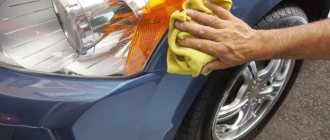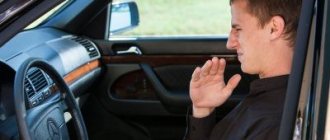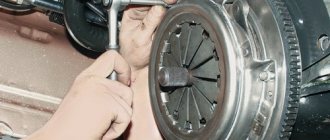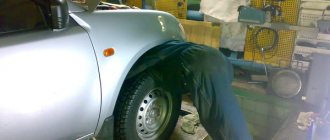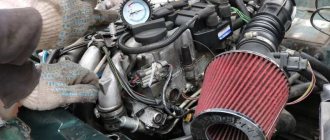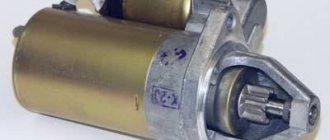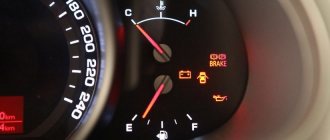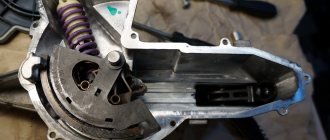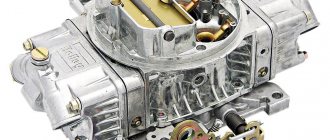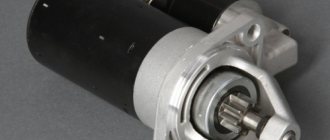Painting a car is in itself a rather complex “event”, which, in addition to experience, also requires patience and attentiveness. Roughly speaking, an amateur cannot cope with this task, and sometimes even professionals with already “full” hands make mistakes. Actually, we will look at how to get rid of them in this article.
How to remove smudges before the paintwork hardens?
- Never try to wipe away a smudge with a rag or napkin, as this may disturb the underlying layers of paint.
- You can reduce the spread and increase of smudges during painting. If you notice that a leak is beginning to form, you can stop its formation by blowing a gentle stream of compressed air over the area. This will speed up the evaporation of the solvent, stop the leakage and make it easier to remove it after hardening.
- For fresh, uncured smudges, the following method works: take masking tape and touch the sticky side to the top of the smudge. Some of the flowing varnish will transfer to the tape. This can be done several times, each time touching with the clean sticky side, until the bulk of the smudge is removed. You just need to lightly touch without touching the lower layers of paint. Next, blow this area with compressed air from a spray gun to speed up the evaporation of the solvent, spray a dry thin layer of varnish and leave to dry. After 15–30 minutes, apply a full coat of varnish (see article on proper varnishing). The remaining irregularities can be removed by sanding after the paintwork has completely hardened.
- If a smudge has formed during painting, it can be moved lower by spraying an excess amount of varnish into the smudge area. Thus, you can move the smudge to a place where it will be easier to remove it (for example, away from the edge or concave part) or even beyond the edge of the panel. This method works on vertical body panels.
Fresh varnish smudge on a car fender
You need to spray an excess amount of varnish into the smudge area.
The leak begins to slide down
As a result, the smudge disappeared and the paintwork became smooth.
The varnish leak has moved down the wing
Removing pollen with an auto scrub
Auto scrub is an alternative to cleaning clay and is produced in different versions - a circle (for working with a polishing machine, as well as manually when using a special holder), a mitten, a towel, a sponge (for working manually). It can have different gradations (aggressiveness of impact). When using an autoscrub for machine processing (Autoscrub Foam Pad), it is recommended to use a dual-action (eccentric) polishing machine, since a rotary machine will be too aggressive on the paintwork.
Auto scrub is used with a lubricant or soap solution.
The close-up photo shows pollination along with traces of water droplets. This contamination occurred when the car was parked close to workers who were painting something. The most damaged part was the trunk lid. The surface was very rough, and the contamination was not washed off.
For cleaning, a medium grade Nanoskin Autoscrub wheel was used on an orbital polisher with a large amount of lubricant (diluted Nanoskin Glide). This is a foam circle combined with a very soft rubber surface. After removing dirt and wiping with microfiber, the surface was polished.
The most common defects in the paintwork of a car body
Paint smudges on the car body
Paint smudges on the car body
One of the common defects is the appearance of paint smudges. Liquid paint, collected in paths, flows along the surfaces being painted, creating a visible defect and deteriorating the quality of the applied coating.
Eliminating car paint defects can be practically impossible, so it is very important to know the causes of certain defects in order to do the job correctly
To prevent paint smudges, follow these rules:
- properly dilute the paint to the desired consistency, avoiding low-quality solvents.
- avoid applying enamel in a thick layer, in particular if you are working with slow-drying paints;
- Correct installation of the sprayer affects the quality of paint application, and too close a position will certainly lead to paint drips.
- Monitor the set temperature regime, excluding a decrease in the temperature of the environment or the surface of the body.
- Use a high-quality primer on the body surface, otherwise the paintwork will be absorbed unevenly.
Reasons for the appearance of the “Grain” defect
Painting defect – Graininess
Car painting defects can be of various types. Thus, often after the application of the paint and varnish coating is completed, a rough graininess of the painted surface appears. To prevent such a defect you should:
- ensure the cleanliness of the room in which the car is being painted, as an excessively dusty environment will deteriorate the quality of the coating and make it grainy.
- Check the paint for particulate matter. And remember that before pouring the material into the spray gun, it is necessary to filter the paint to remove solid particles, debris, and films.
Eliminating car paint defects may require maximum effort from you. Even thorough polishing or grinding of the body surface may not provide the desired effect. Therefore, experts advise carefully studying the reasons for the manifestation of certain shortcomings in order to avoid subsequent problems.
Poorly drying varnish is also a painting defect.
The reasons for its occurrence may be the following:
- the material was applied in an excessively thick layer;
- low-quality or inappropriate diluent was used;
- the room temperature was too low or the humidity was too high.
Shagreen - the surface of the body becomes like an orange or morocco
Painting defect – Shagreen
Why is this happening:
- the diluent is incorrectly selected and evaporates too quickly;
- the varnish was poorly diluted, so it does not spread well enough over the surface to be painted;
- uneven supply of compressed air to the spray gun contributes to poor atomization of the material;
- when applying varnish, the distance from the spray gun to the surface of the body was too large;
- the required temperature conditions were not observed;
- the performer did not observe the required drying time for each layer.
How to prevent them from appearing
To prevent the formation of smudges on the surface of a car when painting, it is advisable to adhere to the following rules:
- Thoroughly degrease the body before applying the coating;
- choose the optimal thinner based on temperature conditions and repair area;
- maintain exact proportions when using solvent;
- adhere to the correct coating application technology, avoid local accumulations of the product and uneven application;
- do not make a large number of layers or their excessive thickness;
- follow the instructions for operating and setting up the spray gun;
- apply materials at the optimal temperature - it is about 20 degrees.
You can avoid the formation of defects by first carrying out a test staining on another surface. This will allow you to optimally configure the tool, acquire and hone your operating skills. It is important to pay attention to cleanliness, proper surface preparation and temperature conditions in the room.
Deterioration of paintwork due to environmental influences
During the operation of the car, its coating is greatly affected by all kinds of insects that break on the hood and other parts of the body. Such impacts leave small spots, then, under the influence of high temperatures and humidity, the dead insect seems to “sink” deep into the car’s coating.
Because of this swelling, the paint begins to deteriorate at an accelerated pace. And although the damage is only a few millimeters in size, it can have a very negative impact on the paintwork. You should try to notice such defects immediately and eliminate them.
To do this, you need to thoroughly wash the vehicle using special shampoos. After it dries, all affected areas are treated with a special liquid to remove adhering insects (you can purchase it at a specialized auto store). Then the surface is thoroughly cleaned with a degreaser and treated with solid mastic.
Some defects can be caused by seemingly harmless bird droppings. The damaged area usually appears duller than the rest of the coating and the area is slightly corroded. It is in hot weather that bird droppings most seriously damage the paint and varnish that covers the car.
If it is not eliminated in time, it can cause chemical burns to the surface, cracks, and the paint layer in this place can be etched down to the putty layer. If the damage to the body is minor, it can be removed by polishing using special pastes and polishes.
On the body you can also see drops of a brown tint from drops of sap or resin dripping from the trees. They have a destructive effect on the paint layer in the warm season; in winter, the resins practically do not destroy the coating. Due to exposure to high temperatures, the resin begins to melt, its components react actively with the enamel that covers the body and this leads to swelling.
You can get rid of swollen areas in a paint drying box. There, using infrared radiation, the ambient temperature is achieved at 60C, then warm up the vehicle for about an hour. You can remove stuck particles of resin from the body using a clean cloth soaked in kerosene (gasoline).
The secretions of aphids can erode the body coating almost down to the putty. Such droplets no larger than 1 mm in size greatly damage the paint layer, so they need to be removed as quickly as possible. Any tarnished paint that remains after this can be removed by thoroughly polishing the car.
After cement gets on the surface of a car in the warm season, it begins to form alkaline compounds that corrode the paint layer. Therefore, you need to immediately wash off the dirt and remove dull spots after them by polishing. If the cement has already dried, you can soften it by applying a napkin soaked in vinegar to it. After this, the cement is carefully removed, the area must be thoroughly rinsed with ordinary running water and polished.
Industrial dust deposits leave defects on the body that differ in color from the rest of the coating (can have all shades from red to blue). If such islands are not removed in time, rust forms in those places, which can rapidly increase in size.
defect in paintwork
Dust that contains iron particles is very difficult to remove from the surface of the body, and if this is not done immediately, after a few days it will become completely impossible. Dust can be removed from the surface during the washing process, then finishing polishing can be done using a cleaning mastic.
Some flaws form even at the time of painting and can become noticeable immediately after drying.
Reasons for the appearance of smudges and drops on the coating
Leakage occurs as a result of uneven thickness of the coating layer in certain areas. This is especially true for vertical surfaces. Excessive accumulation of wet paint and varnish causes runoff.
Painting a car is a painstaking and time-consuming process.
The reasons for the formation of flaws include:
- use of low-quality paints and varnishes;
- insufficient surface degreasing;
- using an unsuitable solvent or violating the paint dilution rules - the composition becomes excessively fluid;
- incorrect operation of the spray gun, compressor, non-compliance with the technique of applying the product - at the wrong angle, with an increased distance of the device from the surface, prolonged or insufficient use of it in one area;
- lack of preparation of the body for painting, ingress of dust, small debris, insects;
- the use of products without taking into account temperature conditions - at low temperatures the material sets slowly and drops form;
- do not use drying between layers, their large number and weight.
Often the reason for the formation of smudges is the procedure carried out by a beginner without the proper experience and skills - in this case it is recommended to practice painting on a third-party surface.
Drips when using acrylic automotive paints
Car owners are increasingly choosing acrylic car paints for painting. Unlike alkyd paints, they are considered to be of higher quality. They have excellent density and resistance to external damage. Automotive acrylic paints are most often applied in three layers. It is during the application of the latter that there is a danger of drips. You can buy acrylic car enamel, alkyd and other products for car body repair in the Avtomalar - Plus store, which offers low prices for quality brands and detailed professional advice individually.
Avoiding the orange peel effect
There are situations in which irregularities appear on the painted surface, giving it a relief similar to the peel of an orange. This defect is very noticeable on a cleanly washed car and is called “shagreen” among specialists. There will be no auto-cellulite on the painted part if the following conditions are met:
- It is necessary to select the right diluent so that it does not evaporate too rapidly
- Compressed air must enter the working chamber of the spray gun evenly, otherwise the enamel surface will be non-uniform
- The varnish should be diluted thoroughly, otherwise it will not spread well over the surface.
- Do not remove the spray gun over a long distance; if you remove too much, droplets of car enamel will dry out on the fly and fall apart on the surface
- The temperature of the applied enamel must be no lower than the air temperature in the paint booth
- Each subsequent layer of enamel is applied with a time delay of 5-10 minutes.
Sponginess
This drawback consists of small pores - holes in the car's coating. There are several reasons for such a marriage: 1. Poor quality putty - air bubbles may get in during the preparation of the mixture
IMPORTANT! The composition should not be “beaten”; it should be mixed slowly, making movements in one direction (but not in a circle).2. Incorrect consistency of materials - paint, putty or primer is too thick, so it lays down in uneven layers
IMPORTANT! In order not to rack your brains over how to remove paint stains on a car after painting, strictly follow the instructions; all proportions for preparing the solution should be clearly indicated there.3. The spray gun is malfunctioning - the nozzle is clogged with too thick paint. Rinse it, prepare a new mixture.4. The car is not “dried” enough—drops, bubbles, and pores are visible on the surface. IMPORTANT! Don't rush things, don't panic - maintain the optimal temperature in the paint booth and wait for the paint to dry completely. The standards governing the drying process are specified in the manufacturer's instructions. Such a defect can only be eliminated in one way - remove the paint layer and repeat the entire procedure again.
Where do the drips come from?
The main reasons that the paint goes on unevenly is non-compliance with the painting rules. And this manifests itself in different ways.
- Failure to follow the instructions for the paint: the proportions of the pigment and solvent are incorrect, or the thinner used does not match the paint. As a result, the composition turned out to be too liquid, and it is not able to stay on the body;
- The spray gun is not adjusted before use;
- The muzzle of the apparatus was held at an angle, or at too great a distance from the surface, or over one area for too long;
- During the work, dust got into the paint;
- The temperature regime was violated when storing the compositions or in the room where painting was carried out;
- The required time interval was not maintained between individual layers, and the previous one did not dry completely before applying the next one;
- Well, and, of course, low-grade paint. Moreover, it does not have to be cheap: you can buy an expensive one, but an unsuccessful one, or a trusted manufacturer, but a fake.
Minor flaws:
Some defects can be corrected either immediately or without additional effort. So, if you are painting a separate element of the body and notice that the paint has flowed, you need to quickly turn it: the composition that has not yet dried will be evenly distributed over the surface.
If drips are detected after drying, but are very small (for example, they are not visually detected, but can be felt), another applied layer of paint can help out. Just this time, try to do everything as correctly as possible.
What to do with old stains
There are long-term stains that appear from long-standing leaks and are not eliminated. No matter how much you make repairs, they will show through the paint again and again.
To remove these unsightly places, they should be thoroughly cleaned and washed. Then the problem areas need to be treated with any biocidal solution (a means for destroying fungus, mold, etc.). There is no need to rinse off the solution!
Be sure to wait until it is completely dry to ensure that re-cleaning is not necessary.
Next, a blocking primer is applied to the areas. It is waterproof and will reliably protect your walls and ceiling from stains and smudges. After drying, you can begin painting.
Some recommendations
- To remove smudges after painting a car without damaging the paint surface, you must let the paint dry.
- As a last resort, if you don’t have a cylindrical grinder, you can use an electric drill.
- When there are a lot of paint runs on the car body, in some cases it is easier to repaint the car.
- Often smudges form due to poor quality paint and varnish, so you should not skimp on materials.
- When removing smudges, you need to clean the area with the defect carefully, and it is better not to scrub a little than to overdo it. You can level the surface with longer polishing, but if excess paint is removed, then this area of the surface will have to be repainted.
- If there is no special paper to cover the body, you can use newspapers.
Greetings! Today's video will cover the topic of polishing stains on varnishes and acrylic paint. As part of the lesson, I will talk about how to properly remove a smudge: in theory, about the materials that will be required, and I will show in practice the entire cycle of work. The story will be detailed and understandable, like all my videos. For the work, a test part was taken so that it would be possible to make smudges on it and then tell/show and explain all the possible nuances and flaws that may be encountered in the work. I’ll also tell you whether it’s worth cleaning up smudges and where it should be done, in what part of the part, and where it’s worth repainting the part. I’ll explain what the problem might be, that the leak is visible and much more. In general, all this will be discussed in more detail in the video itself!
Link to this video:
#car_repair, #with_your_hands, #Vlad_SCCH, #drip, #painting, #training, #how_to_remove_smudge, #autorepair
Good afternoon. From today's post you will learn how to remove varnish stains on a car after painting.
It's no secret that Russians' incomes are not as high as they would like and the vast majority of the population drive cars older than 10 years. Naturally, such a long period of time negatively affects the appearance of the car, and most car owners end up repainting their cars, and since painting a car is quite expensive, many do it themselves. In this case, with a high probability the following smudges are obtained:
Read more: Do-it-yourself power steering oil change
And if there is a smudge on metallic (base enamel) it is impossible to remove! Either on acrylic paint or acrylic varnish, the smudge can be removed without major problems, you just need to be careful and patient.
So, in order to remove smudges on acrylic varnish, we will need:
- Sandpaper 240-360-400-500-600-800-1000-1500-2000
- Soft rubber block
- Water
- Polishing paste 1 and 2 numbers
You may need:
Blade for smudges - will speed up the work and allow you not to sand off the smudge itself
Universal putty. – allows you to sharpen smudges without fear of opening the varnish.
Step-by-step instructions if you don’t have a blade to cut off smudges:
Step 1 - sand off the leak itself. Sandpaper with numbers 240-360-400-500-600-800-1000-1500
We work with sandpaper with numbers after 800 with water, and rub the smudge crosswise on a soft rubber block.
Here's a short video for you:
Step 2 - after the smudge is leveled with the rest of the varnish/paint surface, be sure to wash the surface.
Step 3 – polish with paste numbers 1 and 2, making sure to wash the polishing area after each number.
Here's an example in the video:
Step 4 – wash the repair area and enjoy the result (scratches are a consequence of haste).
Notes.
If you have a smudge remover blade, which you can buy here, the process will speed up.
Cut off the smudge with a blade, matte the surface with a rubber block using sandpaper with numbers 400-500-600-800-1000-1500 and then wash and polish according to the instructions.
If there is a very thin layer of varnish at the site of the smudge, or if you have never sanded off smudges before, use putty.
The technique is as follows - apply the putty in an even layer to the area of the leak:
And sand it as in normal preparation for painting.
Your task is to sand the putty, finishing sanding at number 800-1000, in this case the drip will go away and the varnish next to it will not come off.
When the putty is sanded, knock down the marks from 1000-1500 sandpaper with water and polish the area of the leak.
That's all for me today. I hope that the article fully answered the question of how to remove varnish stains on a car after painting?
If you want to add to the article or have any questions, write comments.
Polishing a car after painting the body
Polishing a car after painting
After polishing the car, to maintain the shine and good appearance after painting the car for a long time, you need to polish the car body. Polishing a car body is designed to give the car an excellent appearance, eliminate microcracks, scratches, remove the smallest unevenness in the coating and protect the coating from external factors. Since the smallest paint defects, invisible to the naked eye, allow aggressive liquids to penetrate under the coating and cause corrosion, polishing also protects the body from these processes. Polishing stages:
- partial removal of the coating, in which fine abrasive sandpaper is used;
- restorative polishing using abrasive paste;
- protective polishing after painting the car with a non-abrasive paste to give a special shine.
Types of polishes
- If the paint on the body is not badly damaged, then it is enough to use a polish without abrasive particles to restore it, but before that you need to treat it with a polish with a high content of abrasive elements.
- If there are a large number of microcracks on the body, it is better to use color-enriching polishes. Which cannot replace paint and eliminate scratches to metal, and they do not form a protective coating on the body, so they should be used in combination with protective types of polishes.
Classification of polishes by consistency:
- paste polishes. They are used for horizontal and vertical surfaces due to their thick consistency. At the same time, they give the coating a significant depth of color;
- Liquid polishes are safer to use because they do not cause increased wear of the coating even with prolonged use. But they are limited in scope and are used only on horizontal surfaces;
- Although aerosol polishes are convenient to use, due to the fact that a significant part of the can is occupied by solvent and propellant, the amount of polish itself in it is not very large.
Depending on the depth of damage to the body coating after painting a car, polishing is divided into restorative and protective.
Car polishes
Restorative polishing can be used to remove shallow scratches, the depth of which does not exceed the depth of the paintwork before the primer; tearing out abrasions and oxidized layers, which manifest themselves as clouding of the paintwork, in the form of spots or stripes. The process of applying restorative polishing consists of mechanically removing a surface layer with abrasive pastes about 5 microns thick. Whereas the thickness of the paint coating is about 100-150 microns, therefore about 10-20 polishings can be carried out on one painting without compromising its integrity. Protective polishing is designed to protect the paintwork after painting a car from negative environmental influences. It uses non-abrasive polishes based on wax or synthetic materials. Depending on the bases on which polishes are made, they are divided into wax, silicone and polymer. Wax and silicone protective polishes are easy to apply, but also easy to wash off after two or three visits to the sink. And they will need to be reapplied. Polymer polishes are more durable; they are applied once every 6 months, have good protective properties, but at the same time they are more expensive and their application is more labor-intensive. If you painted your car metallic or pearlescent, then you need to buy polishes specifically for these types of coatings.
How to remove paint from a car using traditional methods?
There are quite a few options for removing paint from a car using improvised means, the effectiveness of which has been tested by more than one driver in his own experience.
Method 1
Remove fresh, unfaded inscriptions as follows:
- Fill a bucket with warm water.
- Add vehicle washing shampoo or dishwashing detergent to it.
- Take a clean sponge.
- Dampen it with soapy water and wash the car.
- Apply solvent if necessary.
Take a nail polish remover that does not contain acetone. Dampen a soft cloth with it. Wipe off any unnecessary paint marks. Wash treated areas with water.
Take acetone. Use a brush or rag to apply it to the paint. Remove it quickly with a dry and clean cloth.
Take gasoline or kerosene. Dampen a rag with it. Wipe off dirt from the coating sequentially in each contaminated area.
Other things to consider
Flaws are best shown in white. To protect yourself from possible failure, do not take a snow-white coating or add a little color to it.
To paint the walls, take the paint that you like best. For the ceiling, take the highest quality one. The ceiling is the most finicky of all planes, especially since you cannot cover the flaws on it with furniture or paintings.
The main components of an excellent result: a well-prepared base, a non-viscous coating and adherence to painting technology. But at the same time, know that the ideal does not exist, which means you shouldn’t squeeze all the juice out of yourself to achieve it.
GAZ-22 is back in service
After disassembling the car into parts and troubleshooting, welding work was performed. The normal condition of the bottom, sills and boxes has been restored.
After removing the old coating from the bottom and body, as well as replacing the rear wings, the car was covered with primer. The new paint color, a dark gray shade, suited the austere model well. The interior and sofas of the car were completely redesigned.
The old engine was not suitable for long journeys. It was replaced with a powerful engine from a Volvo 940 with a volume of 2.3 liters. The lengthy assembly of the updated Volga has reached its logical conclusion.
How to remove smudges of paint and varnish after painting a car? Tips for the case
Blowing off the smudge on the varnish by pouring even more varnish... in the next video I will show the result, and that after the first one...
Most often, the result of a violation of the technological process is the appearance of smudges on the car body.
If the build-up is not too rough and the painter is not very confident, the solution can be supplemented with an aerosol sanding detector.
Smudges occur due to applying the second coat too early. Other reasons: paint or varnish diluted too thin, incorrect spray technique (spray gun too close, spray speed too slow), temperature in the paint room too low. You can read about how to paint without streaks here.
Before performing an operation to eliminate this kind of flaws, it is worth assessing how large an area they occupy on the scale of the car body. If smudges were formed due to the presence of an insect on the varnish, then such defects can be easily eliminated. If the area is large enough, then it would be more advisable to paint part of the car body again.
The process of painting a car is very labor-intensive. That is why this operation is often entrusted to specialists at service stations. But even if you trust a professional and spend a considerable amount of money, you will not always get a high-quality result.
This method can be used in cases where it is necessary to remove smudges even before the paint on the car has completely dried. The essence of the method is to apply (directly over the smudges) a very thin layer of universal putty. After the putty has dried (but no more than 15 minutes), you can begin sanding, similar to the first method.
So, if you are painting a separate element of the body and notice that the paint has flowed, you need to quickly turn it: the composition that has not yet dried will be evenly distributed over the surface. If drips are detected after drying, but are very small (for example, they are not visually detected, but can be felt) , another coat of paint can help out.
The second most common mistake in the appearance of smudges is the insufficient level of knowledge of the technician. In any case, absolutely all stains, regardless of their complexity, can be removed. However, to avoid having to do this, either initially do not take on painting yourself, being unsure of your abilities, or do not trust the first best “garage”.
Chemical treatment greatly facilitates the process of removing varnish from the surface of the car. You just need to buy a product specifically designed for this purpose and apply it to the car. After reading the instructions, you will know exactly how long you need to wait to achieve maximum effect.
You are very lucky if you managed to notice the smudge before the paint dried. In most cases, it will be enough to turn the element to be painted so that the excess paint spreads and lies evenly. And if the leak is very small, it can be hidden by applying another layer of paint.
This happens quite easily, since the coating becomes plastic and soft under the influence of the chemicals that make up the remover.
Next, blow this area with compressed air from a spray gun to speed up the evaporation of the solvent, spray a dry thin layer of varnish and leave to dry. After 15–30 minutes, apply a full coat of varnish (see article on proper varnishing).
Why did the paint lift?
- Cheaper paints tend to lift the old coating more often.
- Solvents of applied paint act on the old coating. This is a chemical reaction of the solvent that softens the underlying surface and lifts it. The reason may be that the base paint is applied too thickly. This can happen due to the old coating becoming saturated or getting under its edges or through rubbing marks from sanding. Never apply a thick (wet) first coat. Apply the first layers thin, semi-wet (closer to dry, but too dry layers are also bad, as they will impair the adhesion of subsequent layers). This will reduce the likelihood of paint lifting. The room must be warm enough so that the solvent has time to evaporate before it affects the surface.
- The first layer did not dry properly. In this case, the materials can be of high quality and compatible. Solvents in the paint base affect the applied coating. This leads to wrinkling. If you apply the base to a recently primed and prepared surface and paint lifts, it means that the primer has not dried well enough or is not fully activated. If the sanding paper "clogged" when you prepared the surface for painting, then this is a sign of uncured primer. If a one-component primer was applied, it does not harden, but only dries and solvents from the paint can saturate it.
- Applying layers that are too thick, preventing the bottom layer from evaporating the solvent and drying at the same rate as the top layer.
- The surface may be too hot to coat.
- Improper cleaning and surface preparation. If there are areas on the surface to be painted that are not prepared for painting (unsanded area). It must be remembered that before sanding the old coating must be thoroughly washed, since the protective coating layer or dirt may remain at risk and impair the adhesion of the new paint. Use matting paste, it has both matting and cleansing properties. You can also read the article “preparing the car for painting”.
- Insufficient drying time between coats. The solvent does not have time to evaporate from the first layer. It is important to dry the bottom layer thoroughly before applying the next coat.
- Too much time between layers. There is a period (window) in which you can apply a second coat or repaint a recently painted surface. If this period has passed, a paint “lifting” defect may occur. Typically, the paint should be applied in several thin layers, every 15–20 minutes and no later than 1–2 hours. If this period has passed, then you need to wait a day and prepare the surface again.
- Sometimes, the paint can wrinkle when applied to the bumper. This can happen if there are areas of bare plastic on the bumper. The anti-adhesive lubricant that is used at the factory during their production may remain on the bumper, which will “lift” the paint. Prepare the bumper for painting correctly (see the article preparing the bumper for painting).
- Incompatibility of coatings. Inappropriate base coat (for example, nitrocellulose paint or primer).
When the top layer is quickly dried, a film is formed that prevents the evaporation of the solvent from the bottom layer.
- Incorrect drying. Accelerating the drying of the top layer leads to the fact that the bottom layer remains wet and is sealed by the top one. Do not dry a freshly painted surface with dryers immediately after applying paint. Allow the surface to dry a little on its own, after which you can accelerate hardening.
- If the surface was degreased using a solvent, instead of a special degreaser, this may cause a paint “lifting” reaction. Even if a special product was used, make sure that the degreaser has completely evaporated before applying paint.
How to properly remove stains
The effectiveness of eliminating smudges depends on the properties of the surface. The texture of the material matters when choosing the tools with which processing is carried out.
On the wall
It is difficult to avoid smudges on vertical surfaces. If they occur, it is recommended to use one of the following methods:
- stain areas are cleaned with sandpaper;
- the thick layer is cut off with a knife or cutter, then cleaned with sandpaper;
- rough layers are cleaned with construction sandpaper soaked in a thinner solution;
- a loose formation is sprayed with an aerosol detector before cleaning - this technique will make the work easier and soften the load.
On the tree
Any defects that appear on the wood are cleaned with sandpaper and washed with warm water and soap. After this, the surface must be completely dried, wiped with a damp cloth, and dried again. Applying the next leveling layer is possible only when all causes of streaks have been eliminated. Wooden surfaces should be painted subject to temperature conditions.
On the ceiling
Stains and deposits on the ceiling can be removed using one of the following methods:
Using a spatula
The tool helps to carefully remove the layer. After this, the ceiling is primed before the next painting. Using a sponge
Use a voluminous damp sponge to treat the problem area, changing the water. Using paint. Some slight smudges can be painted over with water-based paint.
On acrylic paint
Acrylic paint is a composition created on the basis of polyacrylate. The water-dispersed base allows the use of various solvents for acrylates. The peculiarity of the acrylic-based coating is the creation of strong adhesion to the surface material.
Stains on acrylic are removed with a special plane designed to eliminate flaws. Then they start polishing the surface. Polishing is carried out using a special fine polish.
Preparatory work
Important! Stains must be eliminated before the finishing layer has been applied.
So, you will need the following materials:
- masking tape;
- water;
- polishing machine;
- sandpaper;
- wooden block;
- polishing paste;
- sharp blade.
Elimination methods
To combat this evil, sandpapers with small grain sizes were invented: 1500, 2000, 2500. Although they leave small scratches on the paintwork, they can then be easily removed with polish. First rough, then softer. Sanding is a monotonous and lengthy process. The temptation to take a larger skin will result in damage to the paintwork. You can carefully remove this tubercle with a special plane. But the risk of harm is also great.
There are several ways to remove shagreen after painting with your own hands. Shagreen in itself is not dangerous. She's just plain ugly. Thorough polishing cannot always remove it. You should lightly walk over the defective surface with fine sandpaper. If the defect is not significant, this will help. An overly expressive “image” is completely removed and the area is repainted.
There are ways to eliminate this defect. To do this, lightly sand the surface with very fine sandpaper and water. You need to add a drop of Fairy substance to the water. But it is better to remove the paint and repaint it again.
Removing minor stains
If the paint has leaked just a little, then getting rid of such flaws will be much easier. Especially if only a separate body part is painted. In this case, immediately after smudges are discovered, you can quickly turn the part over so that the paint, which has not yet completely dried, can spread evenly on its own. Very minor smudges can be masked by simply applying another layer of paint.
Work to eliminate paint defects is completed by surface treatment using special polishing pastes.
Defects in car paintwork
Painting and subsequent varnishing of a car may not always work out. This process requires maximum concentration from the person performing the work, adherence to technology and the use of decent quality materials. But even professional work is not without unpleasant surprises. Moreover, it is much easier to prevent various kinds of errors than to remove them later.
One of the common defects is smudges - drop-shaped formations that appear on the body.
Main causes:
- Unfavorable external conditions. Varnishing can take place in a cold structure or with cold materials. Therefore, it is necessary to warm up the room and the car itself.
- Features of materials. The use of varnish and thinner must be in the correct proportion. They must also be suitable for each other, so it is better to use paints and varnishes from the same manufacturer.
- Inaccurate spray adjustment. The enamel must be fed through a well-functioning small hole in the spray gun, maintaining an angle of 90 degrees. If you use a large nozzle, the varnish will flow rather than spray, and droplets will remain on the body.
- Insufficient degreasing of the car before applying enamel.
Incorrect positioning of the spray gun is the cause of smudges
Elimination of varnishing errors
There are several ways to remove smudges.
The first method is “washing out”. You will need putty, fine sandpaper (P2500 and P2000), water and a vacuum cleaner. The car surface to be treated is first thoroughly dried (an industrial hair dryer or spotlight can speed up the process). Then putty is applied to the stains - it will protect the varnish from damage.
The putty layer is watered and then carefully polished with sandpaper (P2500). By the way, if you wrap it around an even block and make short movements, the polishing will be done more accurately. After reaching the thickness of the putty layer, you should take a finer sandpaper (P2000) and treat the surface with it until the putty disappears. After this, polishing is completed with P2500 sandpaper. At the end of the work, you need to remove the dust with a vacuum cleaner and (if desired) re-coat the sanded fragment with a layer of varnish.
The second method is “washing out” with a marker. You will need a marker, fine sandpaper, water and a vacuum cleaner. This method is similar to the first, the only difference is that the marker replaces the putty. By drawing lines with a marker on the smudges, you can see how deep the polishing goes.
The third method is scraping. You will need masking tape, a construction knife, a rubber block, several types of sandpaper P600-P2500, soap, water. The area where the car is sagging is covered with masking tape. It is needed so as not to damage the clean surface. The smudges themselves should not be soft. Just in case, you can dry them.
Removal of smudges is done with a knife blade - they are carefully scraped off from top to bottom. Then, with a rubber block wrapped in coarse sandpaper and soaked in a soap solution, those places on the car where the varnish was scraped off are sanded. Gradually, the sandpaper needs to be changed to a finer one, ending at P2500.
The fourth method is removal with a cutter. Its main purpose is to remove dust, but it also copes well with influx. The cutter should be held at an angle of no more than 40 degrees. After treatment, the leak area is carefully sanded.
Thus, even with simple improvised means you can remove defects in car varnishing. The main thing is attentiveness and accuracy.
How to pay TWICE LESS for GASOLINE
- Gasoline prices are rising every day, and the car's appetite is only increasing.
- You would be happy to cut costs, but is it possible to live without a car these days!?
Primer Defects: Removal Methods
If the manufacturers' recommendations are not followed, primer paints can also form smudges. If these deposits of primer are significant, then they must be removed, otherwise the unevenness will be noticeable even after applying the top paint coating. Smudges on the primer are eliminated using the same sandpaper of different grain sizes.
Moreover, it is even easier to remove defects with a primer than with paint. After all, minor roughness that may remain after sanding with sandpaper with a grit of P240 to P400 will subsequently be covered with paint. Therefore, you don’t have to waste time on very careful sanding with fine-grained sandpaper (mandatory for the top paint layer). If, after removing the primer drip with a blade, a small cavity forms, then you can not use putty, but simply apply an additional layer of the same primer.
General information about defects on the car body
A chip is a damage to the paint layer. It is necessary to address the problem as early as possible.
Reasons for appearance
The occurrence of defects is due to:
- mechanical impact;
- violation of dyeing technology.
The first category includes the following factors:
Falling hail or gravel falling into the car from under the wheels of other cars
The second most often occurs when the distance is not maintained in relation to the vehicle ahead. Scratching by bushes and branches when moving near green spaces. Damage resulting from careless parking or an accident. Impacts from an unsecured gate leaf when entering a garage or, conversely, when the door is opened carelessly. Scratching with a nail and other actions of vandals. Collision with beetles and other insects that have a hard chitinous covering. Washing with an excessively hard tool or dirty water. When applying paintwork, for example after body repair, the following mistakes are made:
When applying paintwork, for example after body repair, the following mistakes are made:
- Leaves unevenness on the painted surface.
- Dirt and grease stains are removed from it poorly.
- The putty is not applied correctly.
- Inappropriate enamel and other materials are used.
- In the process of preparing a 2-component composition, the recommended proportions of ingredients are violated. This is a mistake that beginners often make. If you lack experience, instead of mixing the components yourself, it is better to purchase the material ready-made.
- A faulty spray gun or compressor is used. This often happens in small workshops where amateur equipment is used. It’s better not to skimp and turn to car painters with professional tools.
The result is low adhesion strength between the paint and the substrate. The coating gradually crumbles due to temperature changes.
Main types
Depending on the depth, defects are divided into categories:
- Small ones. Only the top, varnish layer is damaged. In addition to scratches, these may be traces of polishing, a network of microcracks (“cobwebs”), abrasions or water marks.
- Average. Part of the enamel is chipped.
- Deep. All layers, including the soil, have lost their integrity.
Possible consequences
If you do not get rid of the damage immediately, the following happens:
- With small scratches, the defect grows and turns from local to extensive and deeper. As a result, the cost of repairs increases significantly. This occurs because the paintwork without a protective layer becomes vulnerable to atmospheric factors and mechanical stress.
- With deep chips, the metal of the body rusts. Unprotected steel can rot through and through, which will also lead to a significant increase in the cost of restoration work.
What influences the formation of smudges
Painting a car is not an easy process. It is difficult to achieve uniform distribution of material. Irregularities often appear on the surface. Among the main reasons for the formation of defects are:
- Use of low-grade materials.
- Fluidity of the paint and varnish material due to inaccurate adherence to the instructions set out in the instructions.
- Errors in the use of equipment.
- A base that is not prepared for paint.
- Ingress of debris and dust into areas treated with paint.
- Large distance between the surface and the tools, incorrectly chosen angle of application of the product.
- Insufficient interval for drying individual layers.
- Excessive application of material.
Lack of experience also leads to defects. A little practice on a different surface will make further actions easier.

